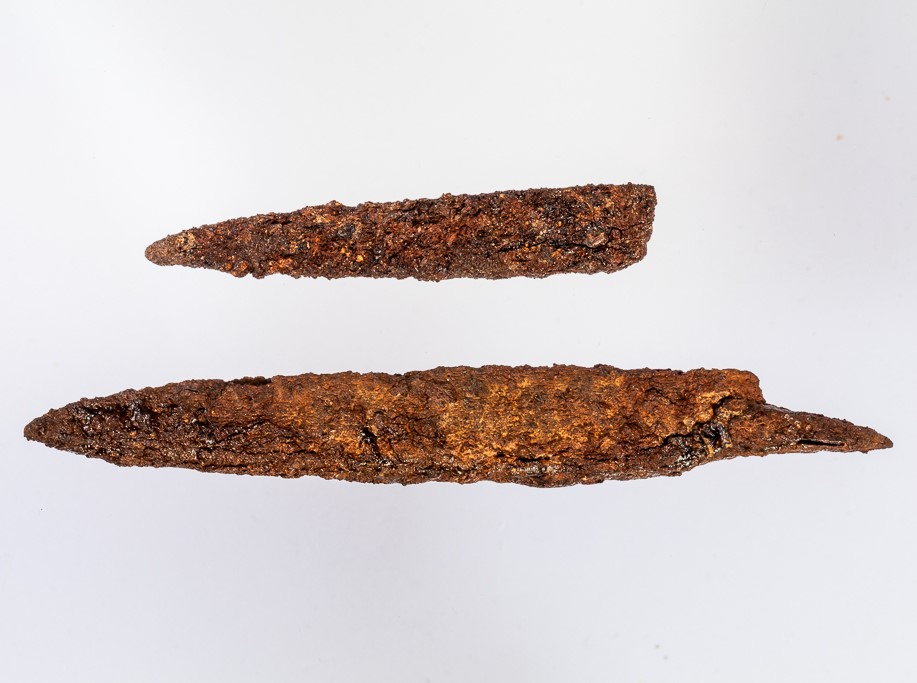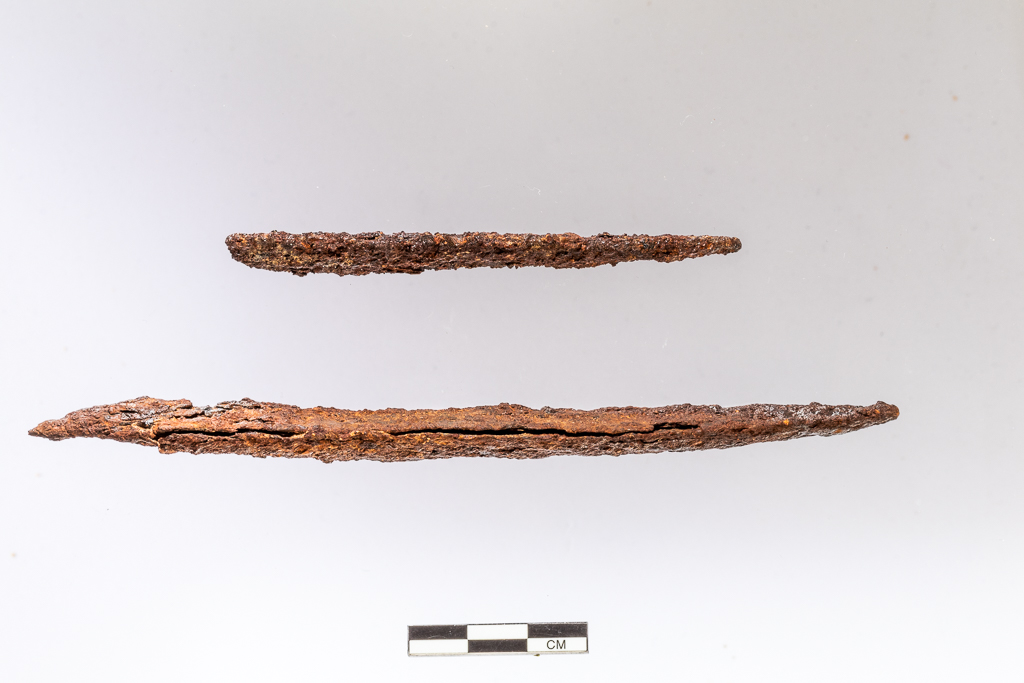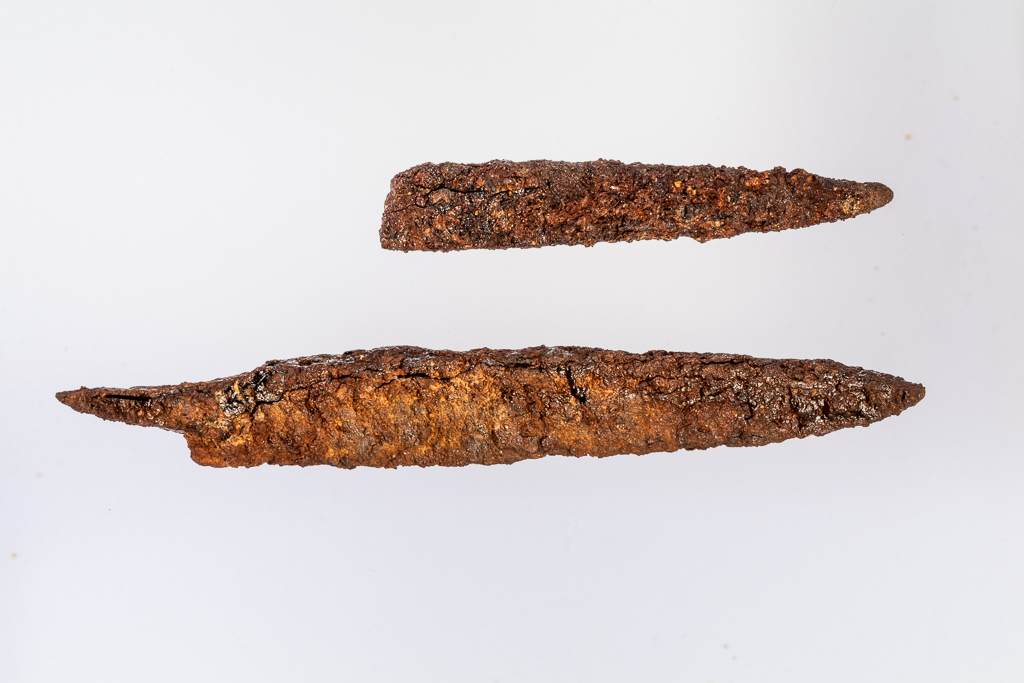Title: Two Iron Blades - 2018.08
Acquisition number: 2018.08
Author or editor: Emma Griggs
Culture or period: Hellenistic.
Date: 2nd century BC - 1st century AD.
Material: Metal - Iron
Object type: Tools and instruments
Origin region or location: Syria
Origin city: Jebel Khalid.
Display case or on loan: 4
Keywords: Jebel Khalid, Hellenistic
M. Mazis, Jebel Khalid on the Euphrates, vol. 7: The Metals, Mediterranean Archaeology Supplement (Sydney, forthcoming)
2018.08
Two Iron Blades
On loan from Professor Graeme Clarke AO FAHA, co-director of excavations at Jebel Khalid, Syria.
The iron blades at Jebel Khalid would have been used for domestic, personal, medical and agricultural purposes. Sharp and heavy blades could have been repurposed and used for attack and defence. Additionally, in antiquity blade shapes nominally associated with agriculture were also used as weapons. But the chief uses of relatively small blades, like the two in this collection, would probably have been for non-military purposes. The blade shapes and sizes hint at their potential uses, principally for use in a domestic context for personal grooming, medical situations, butchery, and food preparation and consumption, particularly in connection with meat.
It is likely both the blade fragments here and those found at Jebel Khalid belonged to knives. These knives would possibly have had wooden handles, but other materials such as bone, leather, antler or a contrasting metal may have also been used. The blades would have been hand-forged and the types of blades produced would have been driven by the preferences of the metalworkers and the demands of the user.
JK 90.340
Metal Inventory Number: B138
Housing Insula, Area 45
Floor 1 (?). Phase B/B+ (Period 3-4). Mid second century BC to 1st century AD.
Length: 8.3cm; Width: 1.4cm. Fuller: Length 0.5cm: Width 0.2cm
Iron blade. Single edge. Type 1. Fragment. Straight Back, convex edge with fuller. Fuller or groove runs along one cheek only, near spine for most of the length.
Type 1 blades have a single edge, straight back and a convex edge. They were possibly used for butchery and food preparation. They account for 30% (24 of 80) of the blades found.
JK 05.1143
Metal Inventory Number: B171
Area B (Temple)
Lower floor (Period 3-4) Mid to late second to third century BC.
Length 14.5cm; Width 2cm.
Iron knife, single edge. Type 4. Convex back, convex-edge blade with stem tang. Short tang in line with spine, tapering to a point. Right-angled return.
Type 4. Blades have a single edge, convex back and a convex edge.
Accounts for 7% (six of 80) of blades found.
M. Mazis, Jebel Khalid on the Euphrates, vol. 7: The Metals, Mediterranean Archaeology Supplement (Sydney, forthcoming)
Emeritus Professor Graeme Clarke.


